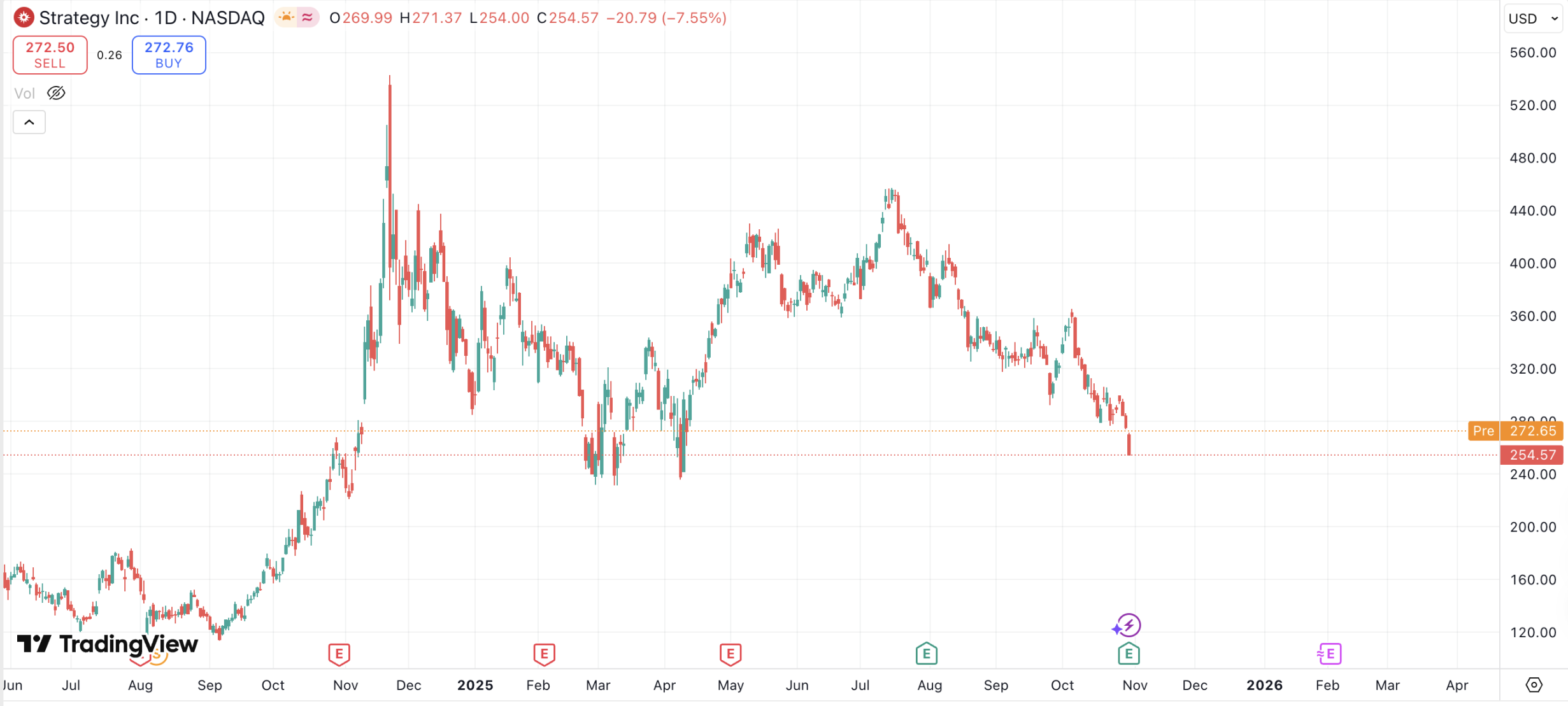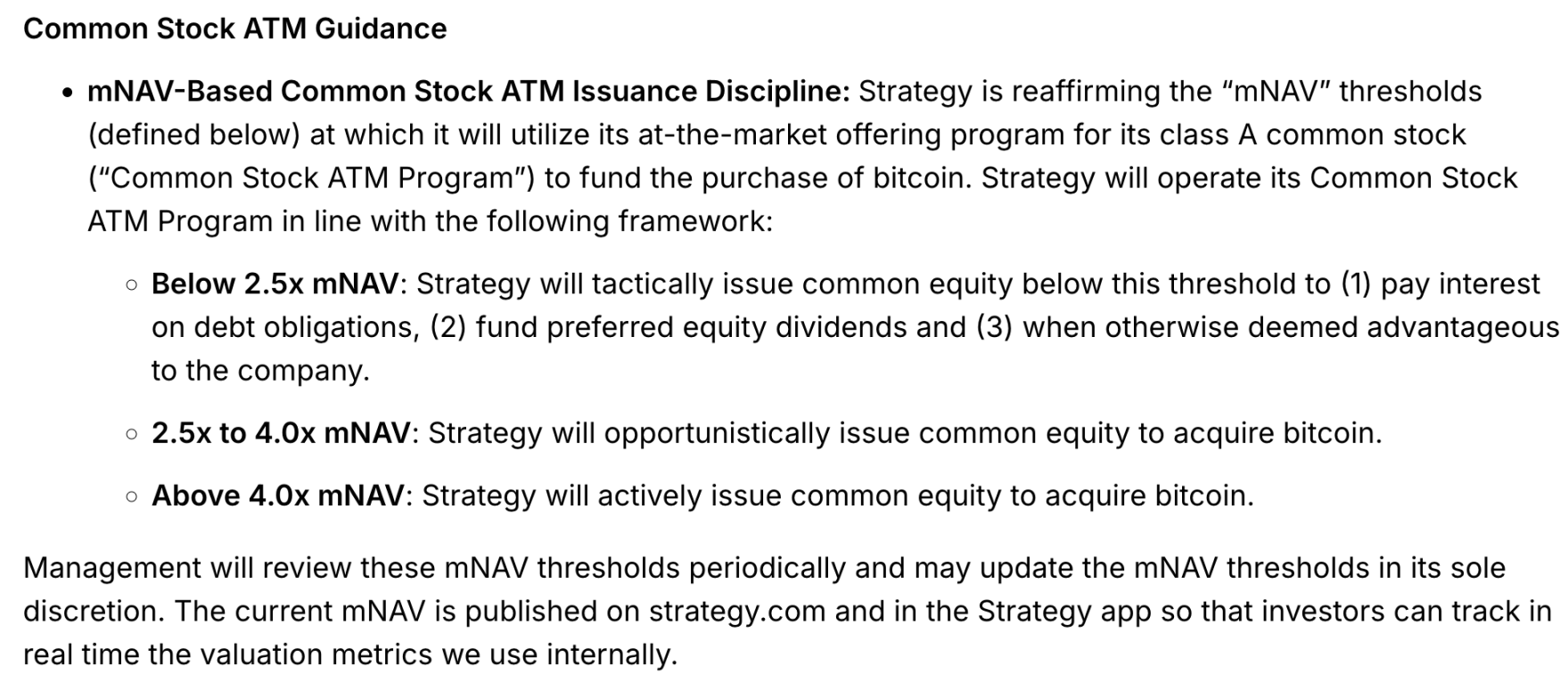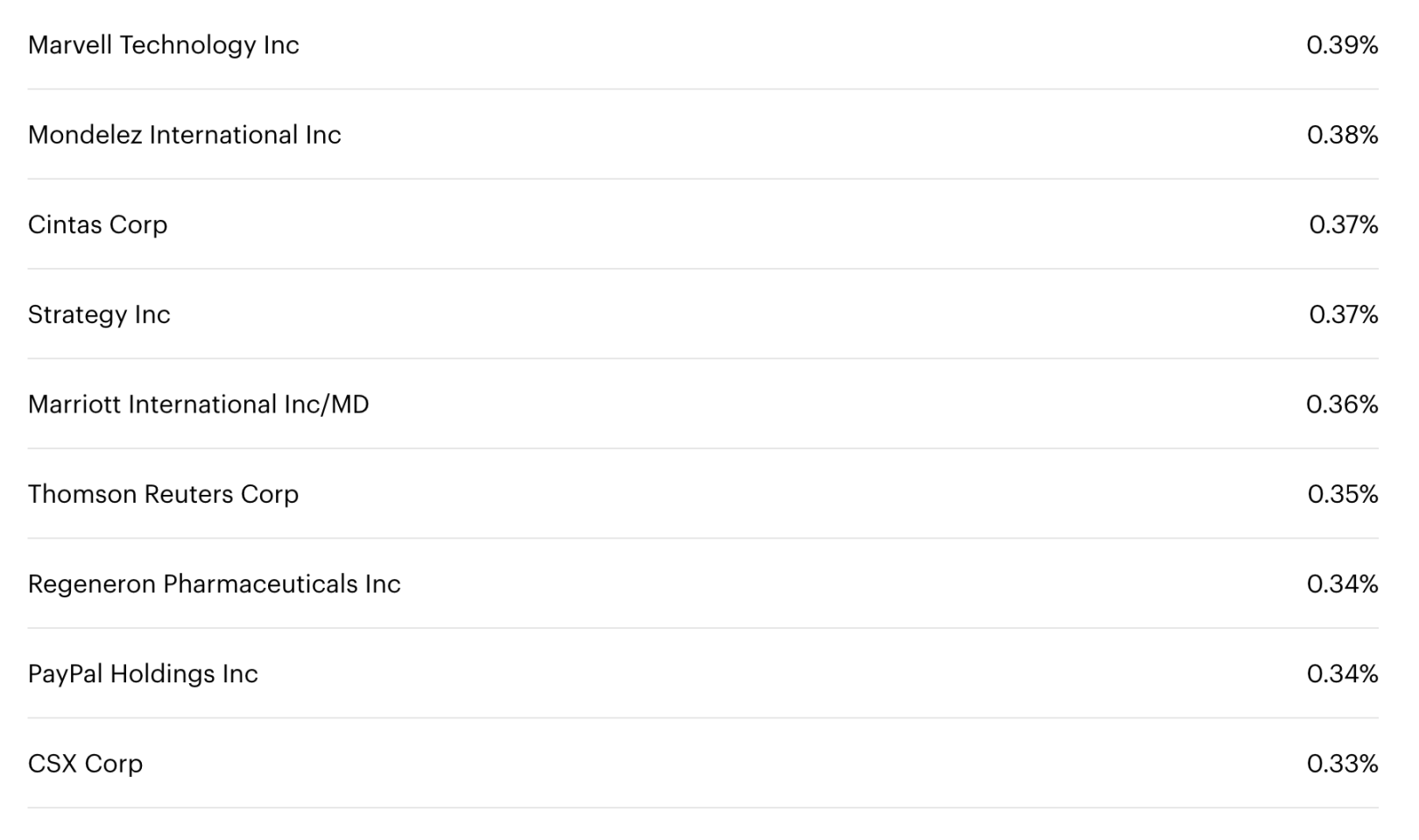A crisis lurks behind the $2.8 billion net profit: Will Strategy be kicked out of the Nasdaq 100?
Written by: Eric, Foresight News
Original Title: $2.8 Billion Net Profit Fails to Mask Decline, Could Strategy Be Removed from the Nasdaq 100 Index?
After the U.S. market closed on the 30th local time, bitcoin DAT’s leading stock, Strategy, released its third-quarter financial report. The report showed that Strategy’s Q3 revenue was $3.9 billion, with a net profit of $2.8 billion and diluted earnings per share of $8.42.
As of October 26, 2025, local time, Strategy held a total of 640,808 bitcoins, with a total value of $47.44 billion, and the cost per bitcoin had risen to $74,032. Since the beginning of 2025, bitcoin’s return rate has been 26%, with earnings reaching $12.9 billion. Strategy’s CFO Andrew Kang stated that, based on a year-end bitcoin price forecast of $150,000, Strategy’s full-year 2025 operating income would be $34 billion, net profit $24 billion, and diluted earnings per share $80.

Strategy’s bitcoin-related data is basically public and does not cause much market reaction, but due to today’s bitcoin price rebound and the company’s optimistic outlook, Strategy’s stock price rebounded both after hours yesterday and in pre-market trading today. At the time of writing, the MSTR price had rebounded from yesterday’s closing price of $254.57 to around $272.65 in pre-market trading.
According to the financial report, in the three months ending September 30, Strategy obtained a net gain of $5.1 billion through the sale of common stock, STRK, STRF, STRD, and STRC under its stock sale plan. As of October 26, Strategy still had $42.1 billion in financing capacity.
It is worth noting that bitcoin’s current price has risen by more than 40% from its low point this year, while MSTR’s closing price yesterday is only about 6% away from its yearly low. Although the after-hours and pre-market stock price movements represent short-term market recognition of this financial report, in reality, investors have begun to worry about the business model of Strategy or, more broadly, DAT companies.
mNAV Approaching the Life-or-Death Line
According to StrategyTracker data, Strategy’s mNAV (the ratio of market capitalization to the total value of held bitcoin) has reached 1.04. Even when calculated based on diluted shares, this figure is only 1.16, already very close to 1. If mNAV reaches or falls below 1, it means that buying the company’s stock is no longer more valuable than directly buying the corresponding cryptocurrency.
At the end of July this year, Strategy promised at its financial report meeting, “Unless it is to pay preferred stock dividends or debt interest, we will not issue additional MSTR common stock when mNAV is below 2.5 times.” But just two weeks later, in its submitted 8-K filing, it canceled this restriction and added an exception clause: “If the company believes it is beneficial, it can continue to issue stock even when mNAV is below 2.5 times.”
In the latest financial report, Strategy also re-explained the rules for ATM issuance of common stock:

Although the issuance of common stock when mNAV is below 2.5 is still primarily used to pay debt interest and preferred stock dividends, in reality, it is now also possible to use common stock ATM financing to purchase bitcoin when mNAV is below 2.5, and the methods for financing bitcoin purchases are no longer limited to common stock ATM. According to official data, Strategy’s calculated mNAV is 1.25, higher than third-party statistics. Although its calculation method is more complex, ordinary investors actually pay more attention to the simple ratio of total market capitalization to the total value of held bitcoin, which is 1.04.
In addition, Strategy has also retained the possibility of adjusting the mNAV benchmark, which undoubtedly adds more variables. In the first three quarters of this year, Strategy purchased 81,785, 69,140, and 42,706 bitcoins, respectively. As bitcoin’s price has risen, the number of purchases has gradually decreased, indicating that Strategy has long been aware of potential problems.
If Strategy’s mNAV falls below 1, it could deal a significant blow to the overall value of DAT. A few days ago, the ethereum DAT company ETHZilla chose to sell $40 million worth of ethereum to buy back shares, aiming to pull back the mNAV value. On the same day, the world’s second-largest bitcoin DAT company, the Japanese-listed Metaplanet, also announced a stock buyback plan. Although this plan does not involve selling held bitcoin, the pressure on mNAV has already led the world’s two largest public bitcoin buyers to slow down.
Removed from the Nasdaq 100 Index?
During U.S. trading hours last night Beijing time, some investors in the Web3 community speculated that, due to MSTR’s recent weak performance, Strategy might be kicked out of the Nasdaq 100 Index by the end of this year.
Strategy was officially included in the Nasdaq 100 Index in December last year, which briefly pushed its stock price above $500. Although bitcoin prices have since reached new highs, MSTR has not surpassed its previous peak.
In fact, the possibility of Strategy being removed from the Nasdaq 100 this year is almost zero. For a constituent stock to be removed from the Nasdaq 100, apart from basic situations such as transforming into a financial company, changing its listing location, insufficient liquidity, or violating listing rules, it would only be “kicked out” if its market capitalization ranking falls outside the top 125, remains outside the top 100 for a sustained period, or its weight falls below 0.1% of the total index market capitalization for two consecutive months and there is a suitable replacement.

According to QQQ holdings, Strategy’s current weight is about 0.37%, and its market capitalization has not fallen outside the top 100. The index’s year-end adjustment is based on data as of the end of October, so it appears that Strategy is still safe this year.
Earlier this year, there was a wave of enthusiasm for DAT companies in the market, but I must remind everyone that the essence of these companies’ operations is based on a kind of market consensus rather than a financial mechanism. The company’s market capitalization is not necessarily higher than the value of the assets it holds. An article published by National Business Daily in August this year provided a good example: Sohu, an early “orphan” of the internet, had a market capitalization for a long time that was less than the cash it held or the value of its office buildings.
Strategy can still play the game for now because new entrants keep joining the DAT company game, and its “pioneer” status ties up a large number of vested interests. However, if the market suddenly stops recognizing this “game mechanism,” and investors can no longer profit by continuously buying new shares at a stable ratio of company market capitalization to held bitcoin value and then cashing out at higher prices, the risks involved may be greater than most people imagine.
Even if this mechanism can continue, the ongoing frenzy and capital attraction of AI may lead to continued weakness in bitcoin prices, which would also greatly increase short-term pressure on Strategy. While the DAT model has a positive effect on industry development if it continues, it is also necessary to guard against short-term risks brought by stress tests at any time.
After all, $2.8 billion in profit is just investment income, and there is never a perpetual winner in investing.
Disclaimer: The content of this article solely reflects the author's opinion and does not represent the platform in any capacity. This article is not intended to serve as a reference for making investment decisions.
You may also like
Ethereum Staking Weekly Report November 4, 2025
1️⃣ Ebunker ETH staking yield: 3.32% 2️⃣ stETH (Lido) 7-day average annualized yield...

XRP price flashes classic ‘hidden bullish divergence.’ Is $5 still in play?
Bitcoin falls under $101K: Analysts say BTC is ‘underpriced’ based on fundamentals
The Secret Script of the Crypto Market: How Whales Manipulate 90% of Traders, and How You Can Stop Being "Liquidity"

